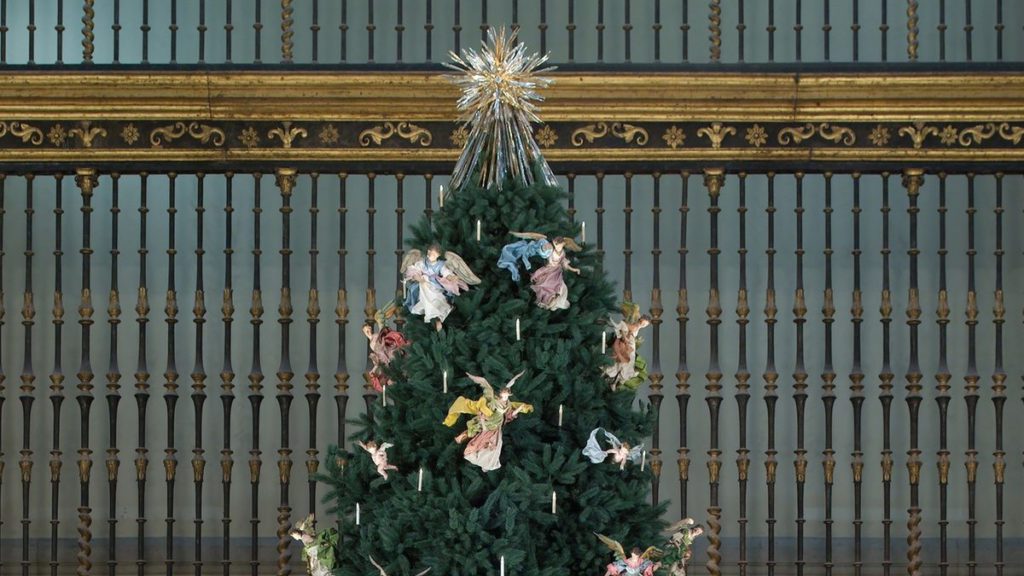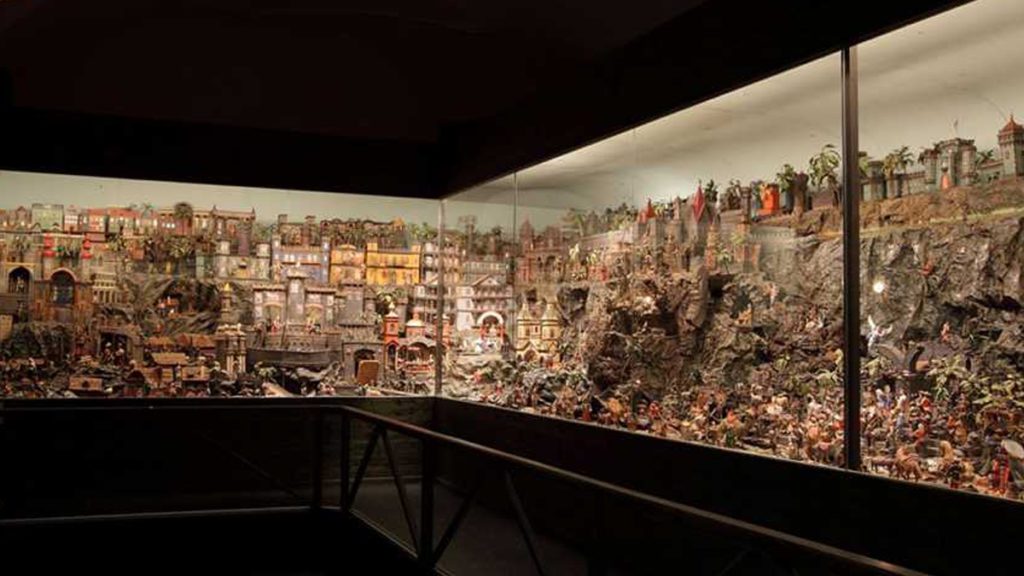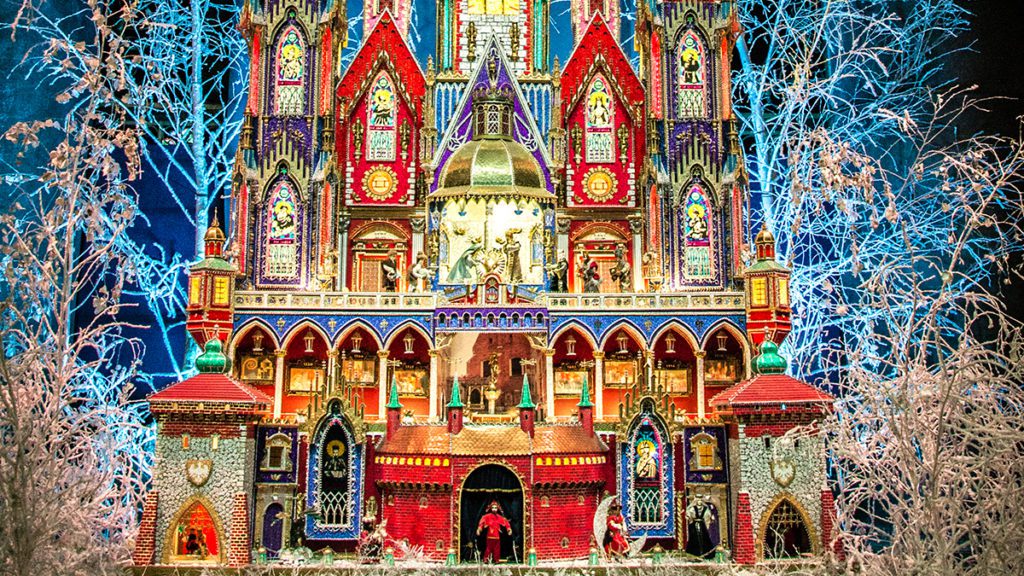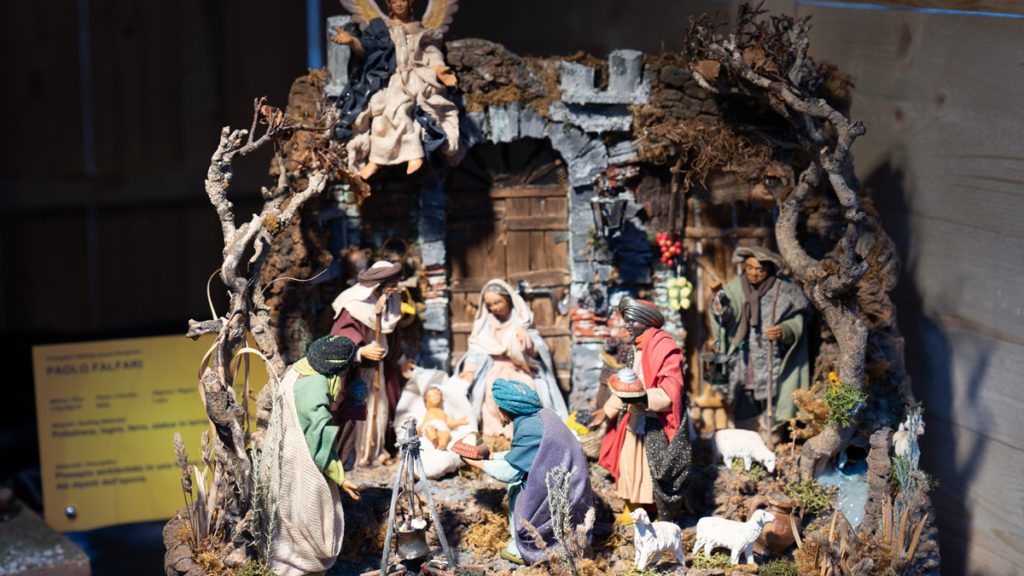IN 1223, SAINT FRANCIS OF ASSISI, THE PATRON SAINT OF ITALY, created the tradition of the Crèche, or Nativity scene, as a representation of the birth of Jesus Christ to be displayed from Advent through Epiphany, the Feast of the Three Kings. From early life-size wooden figures to Renaissance period masterworks, the Crèche symbolizes the true meaning of Christmas: the birthday of Jesus Christ. Also known as a precipio, or collection of small figures set in a pastoral scene, here are some of the world’s most treasured—on exhibit for all to see down through the centuries. O, come let us adore Him.
The Neapolitan Baroque Crèche
Metropolitan Museum of Art, New York City
 Photo courtesy of the Met Museum
Photo courtesy of the Met Museum
More than 250 crèche figures adorn the 20-foot spruce in Medieval Hall. The gift of Met patron Loretta Hines Howard (1904-1982), an American artist and collector, who began collecting Nativity figures in 1925, she donated the multicultural society of a Naples village in 1964 and has been a major New York attraction ever since. Among the heavenly figures are 20 cherubs and 60 angels, 50 animals, and 70 figures.
Krýza’s Crèche
Muzeum Jindřichohradecka, Czech Republic
 Photo courtesy of mjh.cz
Photo courtesy of mjh.cz
NAMED AFTER ITS CREATOR, Tomáš Krýza (1838-1918) a stocking-weaver from the village of Jindřichův Hradec, in the South Bohemian Region, Krýza’s Crèche is the largest mechanical nativity scene in the world (according to the Guinness Book of World Records.) A labor of love, it took Krýza 60 years to build. Covering an area of 56-feet by 7-feet, the 19th century Bohemian-inspired village contains 1,389 figures. Made of wood, flour, sawdust, gypsum, and fish glue, 133 figures were designed to move—originally powered manually before an electric motor was specially installed. Displayed at Muzeum Jindřichohradecka in Jindřichův Hradec, the Czech Republic. In 1936, the museum obtained two additional creches, created by Emanuela and Bohdan Steinocher, which are displayed alongside Krýza’s Crèche. To see this magnificent creation in motion, go onto YouTube and search for La crèche de Krýza.
The Cracow Crib
Notre-Dame, Paris, France

The Nativity Scene of Notre-Dame in Paris was made in 2010 by the Markowski family of Cracow, Poland and displayed at the cathedral in 2015. A modern work of art, it stands over 16-feet high, it took 10,000 hours to make. Influenced by Cracow’s 21 churches, it is inspired by the Barbican fortress, or Cloth Hall, from the Renaissance period, featuring 10 stained-glass windows dedicated to the saints who are buried in Cracow. In the center is the Holy Family, worshipped by the Magi and shepherds. UPDATE: The horrific fire of April 15, 2019 has forced one of the world’s most magnificent cathedrals to undergo extensive restoration. On June 9, 2021, France’s National Commission for Heritage and Architecture (CNPA) unanimously approved the recommendation of the chief architects of Historical Monuments to restore Notre Dam to its prior state, rebuilding the famous spire, completely destroyed by the fire, to the identical design of its designer, 19th century architect Eugène Viollet-le-Duc. What a meaningful way to herald the Christmas season by contributing to the restoration! Log onto www.friendsofnotredamdeparis.org.
Italy’s Celebrated “100 Presepi Exhibit”
 Photo courtesy of 100presepi.it
Photo courtesy of 100presepi.it
“The 100 Presepi Exhibit” attracts thousands of tourists and pilgrims to the Vatican at Christmastime. This year, more than 130 Nativity scenes will be on display. Recently, Pope Francis visited the site of St. Francis’ Nativity scene, where he issued an Apostolic Letter on the importance of the Christmas crèche. “God loves us to the point of sharing our humanity and our lives. He never leaves us alone,” said Pope Francis. Every city, town, village, hamlet, and home in Italy has a presepio, or crib. Some of the most elaborate presepi are on display at Italy’s ancient churches, such as the scene above, at the Basilica of Santa Maria in Trastevere, one of Rome’s oldest churches and the presepi displayed at St. Peter’s Square at the Vatican.
The quintessential Neapolitan figures were made in Naples between 1700 and 1840 and 100 of the finest have been displayed at the Carnegie Museum of Art in Pittsburgh, Pennsylvania every Christmas since 1957. Beyond the Nativity story, the figures capture the essence of village life in Renaissance Italy.

